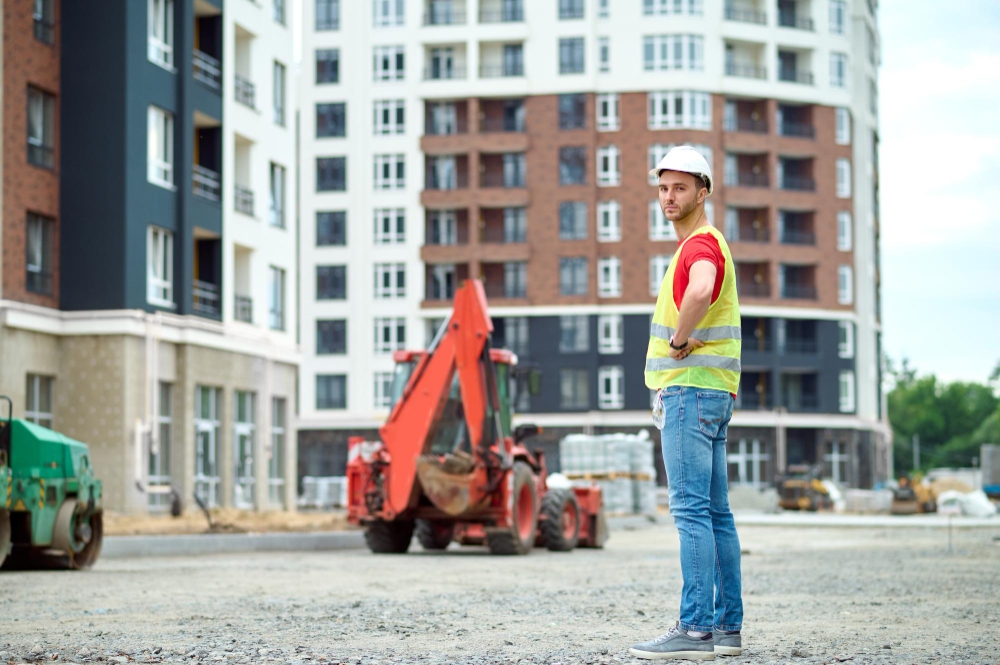
Building demolition is a complex and high-risk activity that requires meticulous preparation and stringent safety protocols. Before any physical work begins, an experienced building demolition contractor carries out detailed risk assessments and planning.
This step ensures the safety of workers, the public, and neighbouring properties, and complying with regulations. This blog post explores the comprehensive risk assessment process and planning steps professional contractors execute before starting a demolition project.
What Is a Demolition Risk Assessment?
A demolition risk assessment is a systematic process to identify all potential hazards associated with a demolition project. It evaluates the likelihood and severity of structural collapse, falling debris, hazardous materials, fire, and exposure to electricity.
The objective is to develop control measures that reduce or eliminate those risks to acceptable levels, protecting everyone involved and reducing project disruptions.
This review is required under occupational health and safety regulations like the Construction (Design and Management) Regulations 2015 (CDM 2015) in the UK or OSHA standards in other countries. Thus, emphasising the critical responsibility demolition contractors have toward safety.
The Importance of Risk Assessment in Building Demolition
Demolition is dangerous due to the unstable structures, use of heavy machinery, and presence of hazardous asbestos. Without identifying and mitigating risks, projects face threats of severe injury, fatalities, legal penalties, and costly delays. A thorough risk assessment allows contractors to:
- Protect site workers and the public
- Follow legal safety requirements
- Avoid expensive accidents and project shutdowns
- Plan for emergencies
- Enhance operational efficiency and confidence among stakeholders
Key Hazards Identified in Demolition Risk Assessments
A professional building demolition contractor pays special attention to a variety of hazards, including but not limited to:
- Falls from Height: Open floors, roofs, ladders, and scaffolding create fall risks
- Structural Collapse: Premature or uncontrolled collapses can injure personnel and damage adjacent properties
- Falling Debris: Flying materials or tools pose threats to workers and passersby
- Hazardous Materials: Asbestos, lead paint, dust, chemicals, and flammable liquids require special handling
- Fire and Explosions: Sparks from cutting tools and combustible materials can ignite fires
- Noise and Vibration: Lengthy exposure can cause hearing damage and affect structural stability
- Live Services: Contact with live electrical cables, gas lines, or water systems can result in electrocution or flooding
Every hazard is rated based on the likelihood of occurrence and potential severity, using a risk matrix that informs the control strategies to be implemented.
The Planning Phase: From Surveys to Controls
After identifying hazards, a building demolition contractor creates a detailed plan mapped to these risks. This phase includes:
- Site Surveys and Inspections: Detailed inspections to evaluate structure integrity, presence of hazardous materials, and site layout
- Utility Disconnections: Coordinating with service providers to disconnect electricity, gas, water, and other utilities before demolition
- Establishing Exclusion Zones: Defining secure areas where only authorised personnel can enter to avoid exposure to dangers
- Method Statements: Documenting step-by-step procedures for the safe execution of the process.
- Resource Planning: Allocating trained personnel, equipment, and safety gear appropriate to risk levels
- Communication Protocols: Ensuring all workers know the hazards and controls, via team briefings and signage
Control Measures to Mitigate Risks
Contractors adopt a hierarchy of controls starting with elimination or substitution (if possible), engineering controls, administrative actions, and personal protective equipment (PPE) as the last line of defence. Examples include:
- Installing guardrails, safety nets, and harness systems to prevent falls
- Sequencing demolition to ensure structural stability and prevent premature collapses
- Using water sprays and dust suppression systems to control airborne dust
- Conducting asbestos removal by certified specialists following strict regulatory guidelines
- Providing PPE such as hard hats, gloves, hearing protection, and respirators
- Implementing fire watch protocols and having extinguishers on site
Documentation and Legal Compliance
A comprehensive risk assessment and demolition plan are documented and retained for compliance and future reference. This documentation supports:
- Regulatory inspections and audits
- Training new workers on site-specific risks
- Incident investigations if accidents occur
- Continual risk review and improvement during project stages
A building demolition contractor also requires workers and supervisors to sign off on having understood risks and safety measures before starting work.
Monitoring and Reviewing Risks During Demolition
Risk assessment is not a one-time task but an ongoing process. As demolition progresses, conditions evolve, and new hazards may emerge. Contractors track the site and review risk evaluations, adapting controls as needed. This vigilance ensures ongoing safety and project success.
Conclusion
Conducting thorough risk assessments and careful planning is the backbone of safe and effective building demolition. Professional demolition contractors identify potential hazards, evaluate risks, and execute control measures before breaking ground. This disciplined approach protects workers, the public, and property, while ensuring compliance with stringent regulations.
For property owners and developers, working with demolition contractors who focus on risk assessment and careful planning means peace of mind and smoother project execution. Safety and preparation go hand in hand in ensuring demolition projects are carried out successfully, on time, and without incident. Choose Fincham Demolition to work with the best building demolition contractor in London.


